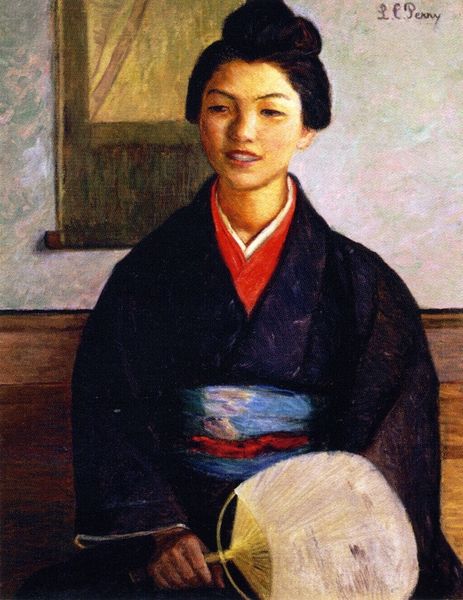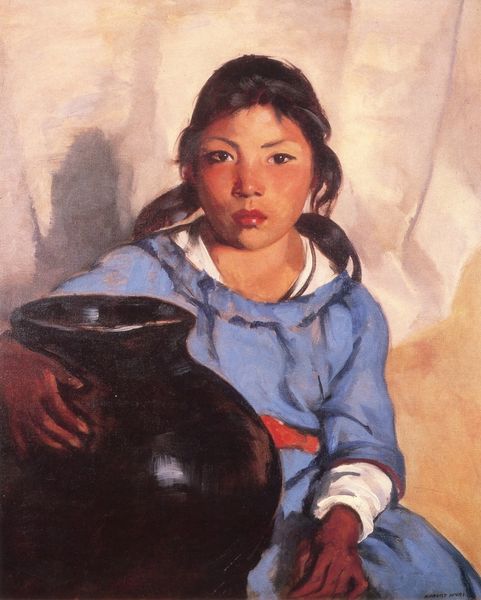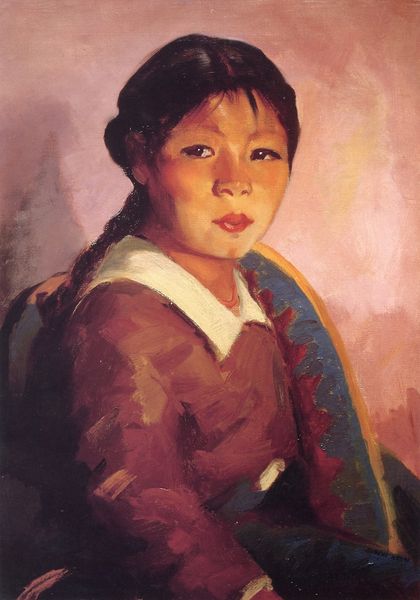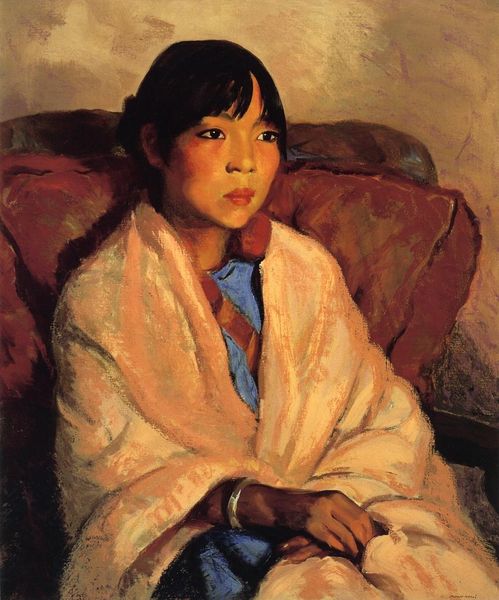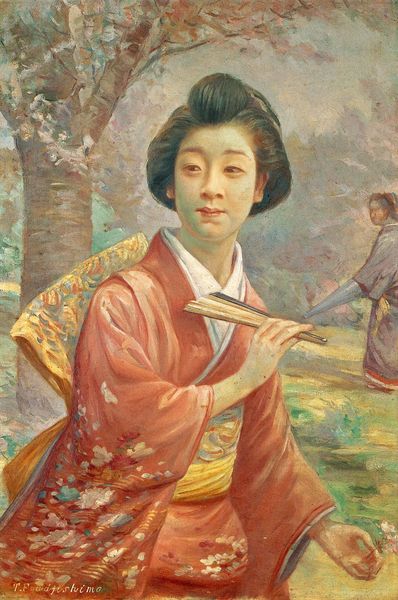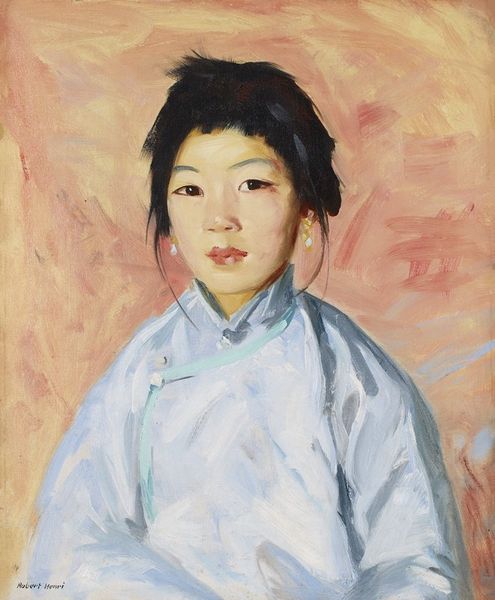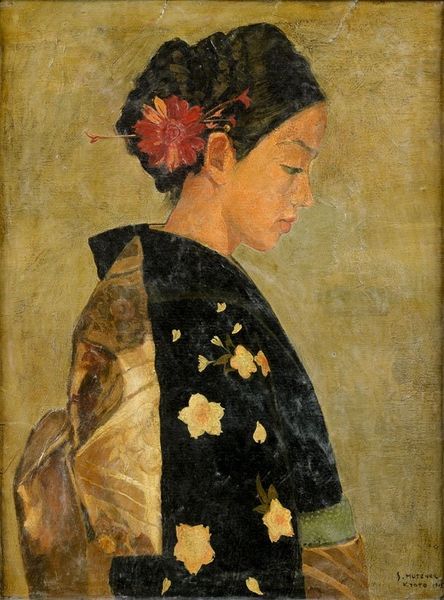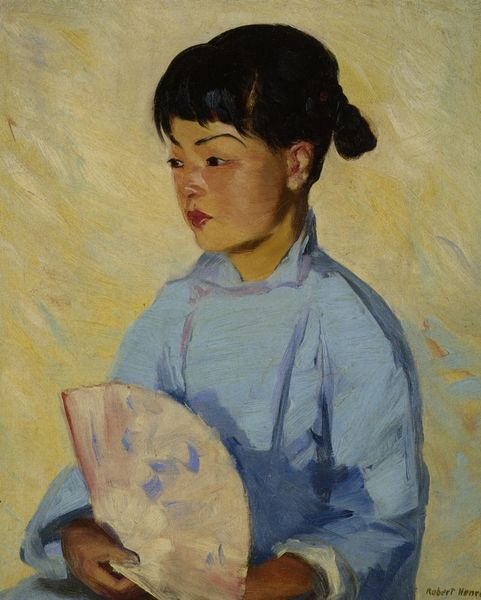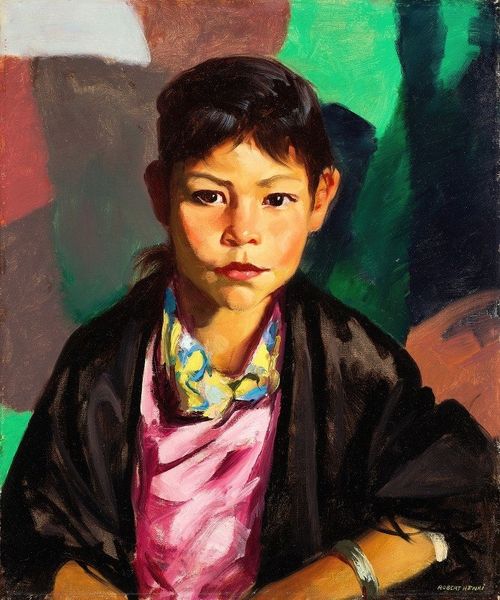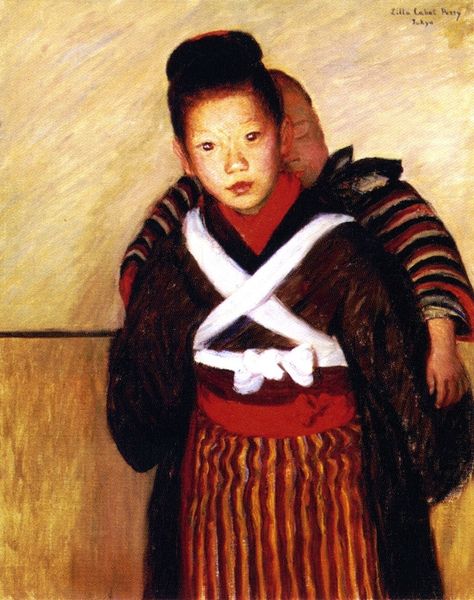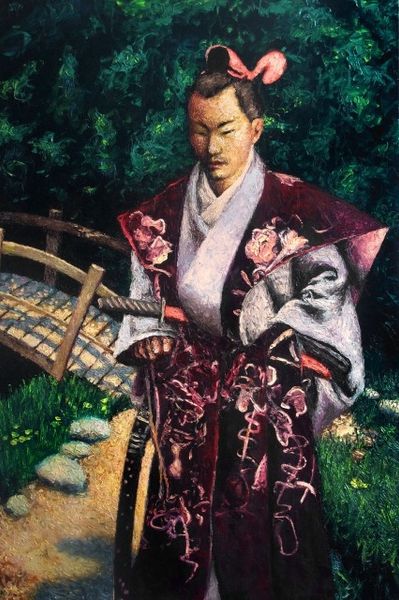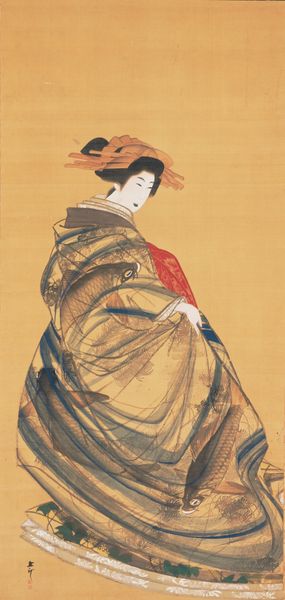
Copyright: Public domain
Curator: Welcome. Here we have Lilla Cabot Perry’s "Portrait of a Young Girl with an Orange," completed around 1901. A captivating painting influenced by Japonisme and the Impressionist movement. Editor: There's a subtle quality here. The girl's gaze is directed towards the viewer, but at the same time she looks away from the viewer as if distracted. It’s this quiet moment that arrests the eye, like seeing someone caught in thought. The colours feel organic and textured. Curator: Perry spent a significant time in Japan, becoming deeply immersed in Japanese aesthetics and artistic conventions. This painting is one example, with the incorporation of a kimono and bamboo motifs behind the young girl as Japonisme exploded into public consciousness. These Japanese visual cues provided an entryway for a white American artist to display familiarity with Asian artistic styles while safely positioning herself within acceptable Orientalist frames. Editor: I find myself wondering about the materials she used. Those subdued colours would come from particular pigments and ground minerals and were available commercially. There is almost a tension created by the materiality of Japanese signifiers through paint, and its function to commodify Japonisme for the Western consumer. Curator: Absolutely, we can also view it as part of the broader artistic and social trend, where Japanese art and culture were influencing Western artists seeking new forms of expression at the dawn of the 20th century. Editor: Right, thinking about the oil paint itself - a relatively new material at the time in terms of its mass production - it has a role in creating a bridge between social class and cultural values. The painting becomes less about the girl or orange, but more about how those Japanese images are converted into marketable material through process and presentation. Curator: Perry skillfully blends Western painting techniques with Japanese sensibilities. She navigates the tricky currents of cultural exchange prevalent at the time, making this piece culturally valuable beyond its sheer aesthetic beauty. Editor: Exactly! Considering the commodification and consumption, the cultural context is crucial. Thanks for guiding us to a better understanding of these social factors! Curator: It's my pleasure. It's paintings like this, that invite viewers to ponder how the currents of history and identity intertwine within art. Editor: Indeed, reflecting on these layers definitely changes the viewing experience and reveals so much more about its production than initially apparent.
Comments
No comments
Be the first to comment and join the conversation on the ultimate creative platform.
